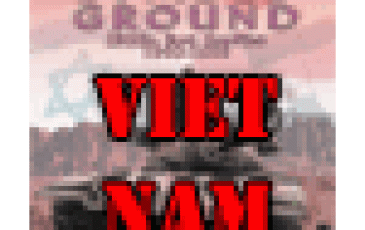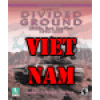| Rating: |
7.56 (7) |
| Games Played: |
10 |
| SM: |
4 |
| Turns: |
24 |
| Type: |
Custom |
| First Side: |
Allies |
| Second Side: |
Axis |
| Downloads: |
258 |
In preparation for the massive Tet Offensive, which included the siege of Khe Sanh in northwestern South Vietnam, the NVA and VC moved thousand of troops into staging areas and stockpiled large quantities of supplies in strategic locations. They also attempted to take over specific locations that could be used by American and South Vietnamese forces to transport troops and supplies to the primary target areas. One of those strategic areas was Happy Valley with Highway 548, the primary east/west road, running from major centers to Khe Sanh.
On 8 January 1968, Companies A and D, 3rd Battalion, 21st Infantry, 196th Light Infantry Brigade (Americal) were moved from their base at Chu Lai to Happy Valley, Quang Tin Province, South Vietnam, where other companies were already engaged in a prolonged battle with the VC forces. The sector in which the battle was taking place was densely populated and hotly contested; covered in rice fields, small hamlets and villages, scattered forested areas and elephant grass. It was located approximately 21 miles west-northwest of Tam Ky, 24 miles northeast of Kham Duc, 29 miles south-southwest of the southern end of the DaNang airfield runways and 36 miles northwest of Chu Lai.
Members of Company A included PFC James A. "Jim" Daly, Jr., Cpl. Willie A. Watkins, and PFC Derri Sykes, all riflemen; and PFC Richard R. Rehe, a grenadier. Members of Company C included 1st Sgt. Richard F. "Top" Williams, the company's first sergeant; PFC Frances E. "Frank" Cannon, radio operator; Sgt. Thomas A. Booker, platoon sergeant; PFC David N. Harker and PFC James H. "Jim" Strickland, riflemen.
Upon arriving in the combat area, the replacement troops were assigned battle positions on the south side of Highway 548 to bolster American lines. In the continuing fierce battle, air support was repeatedly called in to suppress enemy action. As the battle raged around them, a mortar shell exploded near PFC Cannon, the company radioman, injuring him and killing Sgt. Booker. Frank Cannon's wounds consisted of a large hole in his upper back and a smaller hole near his neck. As the hand-to-hand fighting continued, a VC stabbed PFC Harker in the side with a bayonet, PFC Strickland was wounded, but not seriously; and 1st Sgt. Williams was shot through the right hand and sustained less serious injury to his arm. All four men were captured on 8 January 1968.
The following day, 9 January 1968, members of Company A remained under heavy attack. An enemy grenade landed near PFC Sykes and Cpl. Watkins. The two riflemen jumped for cover and Derri Sykes was struck 3 times in the chest by small arms fire. Willie Watkins was positioned slightly forward of Derri Sykes and both soldiers were captured immediately. Other soldiers were also captured including Willie Watkins. During his evacuation from the area, PFC Watkins saw PFC Daly lying in a rice paddy wounded and possibly dead. When prodded with a VC bayonet, Jim Daly moved slightly drawing attention to himself and was immediately captured.
Later on Willie Watkins saw Derri Sykes with his wounds bandaged and calling for water. During their first day of captivity, Willie Watkins and Jim Daly were ordered to carry Derri Sykes along the trail, but eventually were forced to leave him under a shed at a house on the trail. They never saw PFC Sykes again. PFC Daly and Cpl. Watkins both said that PFC Richard Rehe had also been wounded before being taken prisoner. As with Derri Sykes, American POWs did not see Richard Rehe after the first day of captivity. The rest of the American POWs were taken to a VC run camp known as ST18. This camp was located in heavy jungle just south of the town of Tam Ky and 15 miles west-northwest of the major US base at Chu Lai, Quang Nam Province, South Vietnam.
For Americans captured in South Vietnam, daily life could be brutally difficult. Some of these camps were actually way stations the VC used for a variety of reasons. Others were regular POW camps. Regardless of size and primary function, conditions in the VC run camps frequently included the prisoners' being tied at night to their bamboo bunks anchored by rope to a post in their small bamboo shelters. In others, they were held in bamboo cages, commonly referred to as tiger cages, and in yet other camps the dense jungle itself provided the bars to their cage. There was rarely enough food and water to sustain them, and as a result, the Americans suffered from a wide variety of illnesses in addition to their injuries and wounds.
David Harker described their first encounter with a VC medic: "A medic showed up to look at Williams' and Cannon's wounds. Williams' fingers were intact, but the top of his right hand had been torn away leaving a bloody thicket of bone splinters. The VC's field medical technique was typical of what we were to see; he turned his head, held his nose and poured alcohol on their wounds. It wasn't enough. The wounds of both had begun to turn gangrenous. They insisted on eating separate from Strickland and me so as not to spoil our appetites. Blowflies had laid eggs in Cannon's back wound. Maggots fell out as he walked."
Likewise, the primitive lifestyle imposed on these men by their guards was particularly barbaric. Prisoners were reduced to animals, relying on the basic instinct of survival as their guide. After months in this psychological conditioning, many prisoners lucky enough to survive the early adjustment period of captivity, discovered that they were infinitely better treated if they became docile prisoners who did not resist their captors.
Unlike those Americans held in the North Vietnam prison system, the POWs held in the south did not naturally assume a command structure among themselves primarily because the vast majority of them were lower ranking enlisted men whereas those held in the north were primarily officers who were pilots and aircrews. Had such a structure emerged, it would have brought comfort, order and structure to their chaotic existence. It would have also encouraged them to resist the communists instead of allowing the communists to successfully use divide and conquer tactics against their captives.
Frank Cannon, a handsome 6" tall man of 24 with deep set eyes, suffered from the wounds he received by the exploding mortar shell. These wounds became gangrenous, and although they gradually improved by the summer of 1968, Cannon continued to grow weaker. By August, Cannon weighed only 90 pounds and slipped into a coma. In early September 1968, Frank Cannon died in captivity and was buried in the small POW camp cemetery located 10 to 15 yards from ST18 itself.
Top Williams, a veteran of World War II and Korea, was a big gray-haired man who was described as a real professional by those who knew and served with him. He survived gangrene in his injured hand and was receiving treatment for it while still probing for bone splinters in his injured arm when he contracted dysentery and died on 27 September 1968. PFC Bobby Garwood was another POW held in ST18. He provided a map to the US government after his return in 1979 showing the precise location of the little cemetery containing the graves of several American POWs. To date no attempt has been made to recover any of the remains interned in this small graveyard.
Frank Cannon, Top Williams, David Harker, Jim Strickland, Willie Watkins and Jim Daly eventually were held together in various prison camps in Quang Nam Province, South Vietnam. For Americans, as well as Viet Cong, life in these camps in South Vietnam was extremely difficult. The living conditions were primitive, food scarce at times, and disease and dysentery was common while adequate medical treatment remained uncommon or unavailable.
Willie Watkins and Jim Strickland were considered by the Viet Cong to be "progressive" prisoners. In a propaganda move, the VC released them in Cambodia on 5 November 1969. After their release, the soldiers provided vital information to the US military about the other Prisoners of War, the POW Camp and the Viet Cong. Jim Daly and David Harker eventually were moved from South Vietnam into the prison system in North Vietnam. Both men returned to US control in 1973 during Operation Homecoming.
On 14 August 1985, the Vietnamese turned over the remains of 1st Sergeant Richard F. Williams and PFC Francis E. Cannon to US control. The remains were transported to the Central Identification Laboratory, Hawaii (CIL-HI) for examination. On 4 November 1985, the lab's forensic specialists positively identified both men and they were returned to their families for burial.
Of the men captured on 8-9 January 1968 during the battle in Happy Valley, only Richard Rehe and Derri Sykes remain unaccounted for. There is no doubt that Derri Sykes and Richard Rehe were Prisoners of War who died while under the control of the Viet Cong and whose burial site was well marked and documented. As American servicemen, each man has the right to have his remains returned to his family, friends and country. Above all else, he has the right not to be forgotten by the nation for which he gave his life.
For other Americans who remain unaccounted for in Southeast Asia, their fate could be quite different. Since the end of the Vietnam War well over 21,000 reports of American prisoners, missing and otherwise unaccounted for have been received by our government. Many of these reports document LIVE American Prisoners of War remaining captive throughout Southeast Asia TODAY.
American military men in Vietnam were called upon to fight in many dangerous circumstances, and they were prepared to be wounded, killed or captured. It probably never occurred to them that they could be abandoned by the country they so proudly served.
































